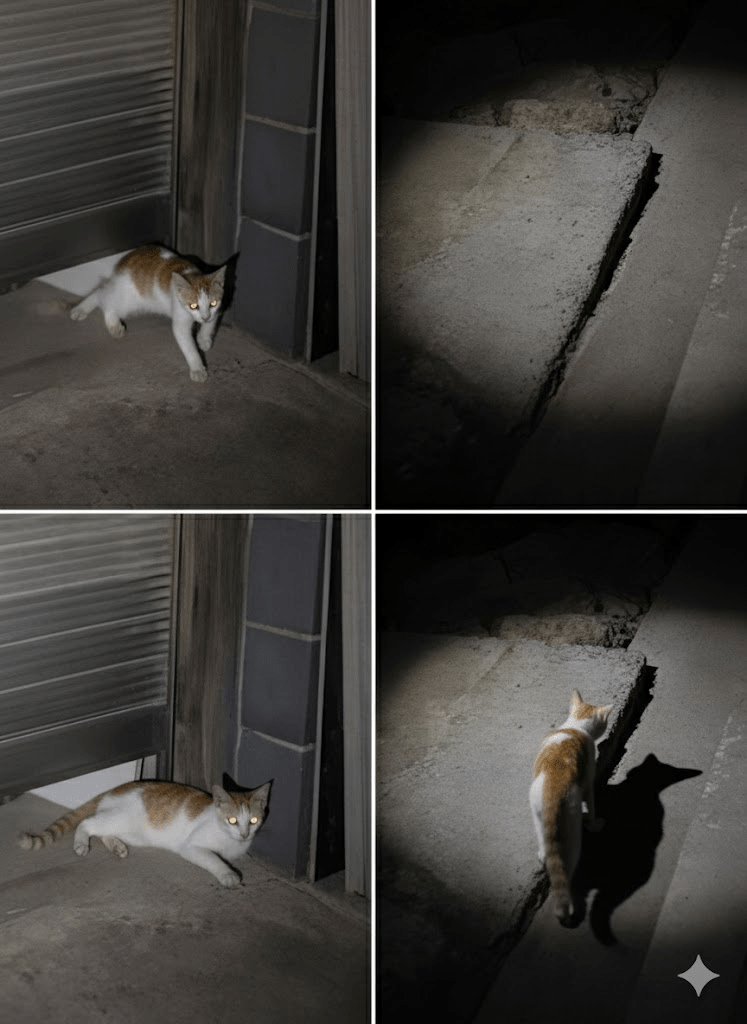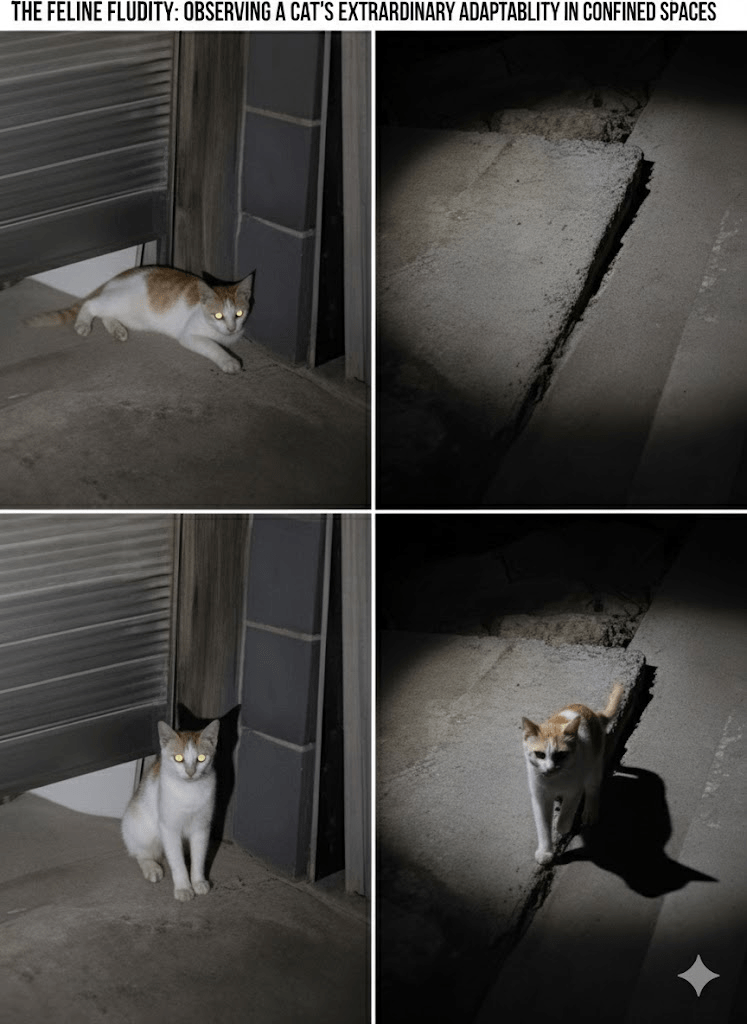In the realm of animal behavior, few spectacles are as captivating and illustrative of pure physical ingenuity as watching a domestic cat navigate tight spaces. The accompanying image vividly captures a moment of such feline dexterity, showcasing a cat as it seemingly melts through the narrow gap beneath a garage door or similar barrier. This visual evidence not only entertains but also offers a profound glimpse into the anatomical marvels and behavioral strategies that allow cats to thrive in environments that would be impenetrable to most other creatures of comparable size. The ease with which this particular cat contorts its body, elongating and flattening itself to squeeze through an opening barely wider than its head, is a testament to millions of years of evolutionary refinement. It speaks volumes about the flexibility of their skeletal structure, the elasticity of their skin, and their innate understanding of their own bodily dimensions – or perhaps, their confident disregard for perceived limitations. This phenomenon, often observed in housecats attempting to sneak into forbidden rooms or outdoor cats exploring urban crevices, is more than just a cute trick; it’s a demonstration of survival, resourcefulness, and an enduring wildness that persists even in our domesticated companions. Understanding how and why cats exhibit such “fluidity” can shed light on various aspects of their biology, their predatory instincts, and even their psychological makeup, inviting us to look beyond the superficial cuteness and appreciate the sophisticated biomechanical artistry at play.

The key to this incredible flexibility lies primarily in the unique structure of a cat’s skeletal system, particularly its spine and collarbones. Unlike humans and many other mammals, cats possess collarbones that are greatly reduced in size and not directly connected to other bones. This allows their shoulders to move much more freely, essentially enabling them to fit through any opening that their head can pass through. Their highly flexible spine, composed of numerous vertebrae with elastic intervertebral discs, further contributes to this remarkable agility. Each vertebra is loosely connected, allowing for an extraordinary range of motion, including twisting, arching, and elongating. This serpentine quality of their backbone is critical when a cat attempts to squeeze through a narrow aperture, allowing it to contort its body into seemingly impossible shapes, much like a liquid flowing through a constricted channel. The muscles surrounding the spine are also incredibly strong and pliable, providing both support and the necessary power for these complex movements. This combination of skeletal and muscular adaptations is a prime example of evolutionary specialization, equipping cats with a distinct advantage in navigating varied and often challenging environments, whether it’s a dense jungle or a cluttered urban alleyway.

Beyond skeletal structure, a cat’s skin and fur also play a role in their ability to pass through tight spaces. Their skin is remarkably loose and elastic, especially around the torso, which allows for significant stretching and compression without causing injury. This elasticity means that as the cat pushes its body through a narrow opening, its skin can temporarily conform to the contours of the space, effectively reducing its apparent volume. The fur, while seemingly a hindrance, can also compress, further aiding in minimizing the cat’s profile. This combination of pliable skin and compressible fur works in conjunction with their flexible skeleton to create an almost seamless transition through obstacles. It’s a natural form of “body armor” that adapts to external pressures, protecting the underlying muscles and organs while facilitating movement. This characteristic is not unique to navigating tight gaps; it also provides an advantage in predatory activities, allowing for sudden twists and turns, and in evading predators, as the loose skin can be harder for an attacker to grip firmly.

From a behavioral perspective, a cat’s approach to confined spaces is driven by a blend of curiosity, exploratory instinct, and often, a sense of security. Cats are natural explorers, and any small opening can represent a potential new territory to investigate, a hidden hunting ground, or a safe retreat from perceived threats. This innate drive is particularly strong in solitary hunters like cats, who rely on stealth and the element of surprise. Small, dark spaces offer ideal ambush points or hiding spots. The image itself suggests an environment that might be part of an exploratory journey, with the cat deliberately pushing its way through the barrier. This behavior is also linked to their territorial nature; establishing and understanding the boundaries of their environment, no matter how small or hidden, is crucial for their well-being. Therefore, navigating a tight gap isn’t just a physical feat but also a manifestation of their complex ethology, reflecting their wild heritage and their continuous assessment of their surroundings.







